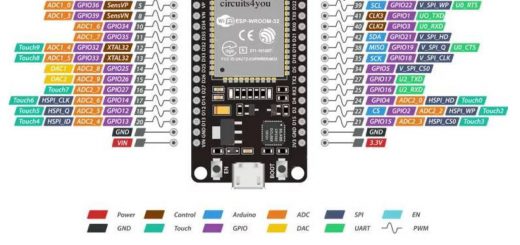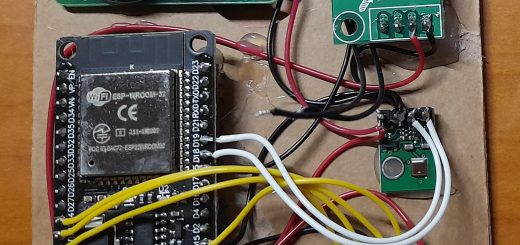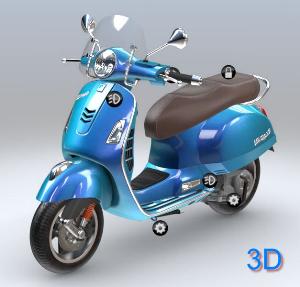Esp32 與 Winbond W25Q128JV 串列快閃記憶體
by Richard · 2024 年 3 月 30 日
https://forum.arduino.cc/t/esp32-and-winbond-w25q128jv-serial-flash-memory/861315
透過範例程式碼(在訊息末尾新增),它可以在 Arduino Nano IoT 33 上正常工作,但在 esp32 上我看不到檔案或寫入任何內容到晶片。
當傳回能夠寫入的 maxfiles 為 0 時,SerialFlash.create() 函數似乎失敗了。
有什麼想法嗎?
謝謝
這是範例程式碼:
#include <SerialFlash.h>
#include <SPI.h>
const int FlashChipSelect = 4;
void setup(){
Serial.begin(115200);
delay(3000);
Serial.println(“SPI Flash”);
if (!SerialFlash.begin(FlashChipSelect)) {
Serial.println(“Unable to access SPI Flash chip”);
while(1){}
}
}
void loop(){
// MAIN MENU
Serial.println(“”);
Serial.println(“”);
Serial.println(“SerialFlash Read and Write”);
Serial.println(“(switch your terminal to no line endings)”);
Serial.println(“————————–“);
Serial.println(“1) Create a new file”);
Serial.println(“2) Open a file”);
Serial.println(“3) Delete a file”);
Serial.println(“————————–“);
Serial.println(“Select a number”);
while(!Serial.available()){}
char choice = Serial.read();
while(Serial.available()){Serial.read();}
switch(choice){
case ‘1’:
newFile();
break;
case ‘2’:
openFile();
break;
case ‘3’:
deleteFile();
break;
default:
Serial.println(“Invalid Selection”);
}
}
/* Create a new file
*
* Request filename up to 20 chars
* Request a size up to 256 bytes
* Request some contents
* Create a file
*/
void newFile(){
Serial.println(“Enter a filename”); // Request filename from user
while(!Serial.available()){} // Wait for user
char filename[20] = {}; // buffer to store user filename
Serial.readBytesUntil(‘ ‘, filename, 20);
while(Serial.available()){Serial.read();}
Serial.println(“Enter a filesize in bytes”); // Request file size from user
while(!Serial.available()){} // Wait for user
char sizeArray[3] = {}; // buffer to store requested file size
Serial.readBytesUntil(‘ ‘, sizeArray, 3);
while(Serial.available()){Serial.read();}
int filesize = atoi(sizeArray); // Convert char array to int (i.e. “40” to 40)
if(SerialFlash.create(filename, filesize)){ // Returns false if file already exists
SerialFlashFile file; // Open the file we just created for writing
file = SerialFlash.open(filename);
Serial.println(“Write some file contents:”); // Request file contents from user
while(!Serial.available()){} // Wait for user
char contents[256] = {}; // buffer to store file contents
Serial.readBytesUntil(255, contents, 256);
while(Serial.available()){Serial.read();} // Empty read buffer
file.write(contents, filesize); // Write the contents buffer
Serial.println(“”);
Serial.print(“New file “);
Serial.print(filename);
Serial.print(” created with size “);
Serial.print(filesize);
Serial.println(” bytes!”);
}else{
Serial.println(“”);
Serial.println(“There was an error creating this file (does it already exist?)”);
}
return;
}
/* Open a file
*
* Print the directory listing
* Request filename up to 20 chars
* Open file and display contents
*/
void openFile(){
printDir(); // Function to print the directory listing
Serial.println(“Enter a filename to OPEN”); // Request file name from user
Serial.println();
while(!Serial.available()){} // Wait for user
char filename[20] = {}; // buffer to store the file name
Serial.readBytesUntil(‘ ‘, filename, 20);
while(Serial.available()){Serial.read();}
Serial.println(filename);
SerialFlashFile file;
file = SerialFlash.open(filename); // open the file
if (file) {
Serial.print(“File Name: “);
Serial.println(filename);
Serial.println();
Serial.print(“File Size: “);
Serial.print(file.size());
Serial.println(” bytes”);
Serial.println();
Serial.println(“File Contents:”);
char buffer[256] = {}; // create a buffer for the file contents
file.read(buffer, 256); // read file to buffer
Serial.print(buffer);
}else{
Serial.println(“File not found!”);
}
return;
}
/* Delete a file
*
* Print the directory listing
* Request filename up to 20 chars
* Delete File
*/
void deleteFile(){
printDir(); // Function to print the directory listing
Serial.println(“Enter a filename to DELETE”); // Request file name from user
while(!Serial.available()){} // Wait for user
char filename[20] = {}; // buffer to store file name
Serial.readBytesUntil(‘ ‘, filename, 20);
while(Serial.available()){Serial.read();}
SerialFlash.remove(filename); // Delete the file
return;
}
/* Print Directory
*
* Print a list of all files on the chip
* Stolen from SerialFlash library example “ListFiles”
*/
void printDir(){
Serial.println(“Directory Listing”);
Serial.println(“—————–“);
SerialFlash.opendir();
while (1) {
char filename[64];
uint32_t filesize;
if (SerialFlash.readdir(filename, sizeof(filename), filesize)) {
Serial.print(” “);
Serial.print(filename);
spaces(20 – strlen(filename));
Serial.print(” “);
Serial.print(filesize);
Serial.print(” bytes”);
Serial.println();
} else {
break; // no more files
}
}
}
void spaces(int num) {
for (int i=0; i < num; i++) {
Serial.print(” “);
}
}
—————————————————————————————————————-
不,如果該程式庫只是使用 Arduino IDE 支援的所有平台的通用功能編寫的,那麼這應該不是問題。我猜你檢查了顯而易見的事情:沒有使用與 Nano IoT 33 相同的文件名,沒有在之前的寫入中填充完整的晶片,等等。如果你……
感謝您的回复,接線是:
ESP32 W25Q128JV
3V3 ——–> 3.3V
PIN4 ——–> CS
PIN18 ——–> CLK
PIN23 — ——> DI
PIN19 ——–> DO
3V3 ——–> WP
3V3 ——–> 保持
接地 ——– > GND
該函式庫是為 arduino 編寫的,這不會造成問題嗎?
謝謝!
—————————————————————————————————————-
SPI 匯流排設計用於連接較短的 PCB。根據我的經驗,只要沒有更大的電噪聲源(pe 馬達)污染環境,SPI 頻率高達 4MHz 左右的麵包板設定就可以非常可靠地工作。您可能會以更高的頻率取得成功,但這可能只是運氣。
ESP(通常,您沒有告訴我們您使用的特定型號)運行在 240MHz 上。 SPI頻率高達50MHz,超過Nano ioT 33的處理器時脈(48MHz)。
—————————————————————————————————————-
我建議在麵包板設定上保持在 4MHz 或以下(假設您使用高品質的麵包板)。
在 PCB 上,您可能會走得更高,如果您正確進行走線佈線,50 MHz 應該不是問題。
多謝!我改成 20Mhz,在麵包板上運作得很好。









